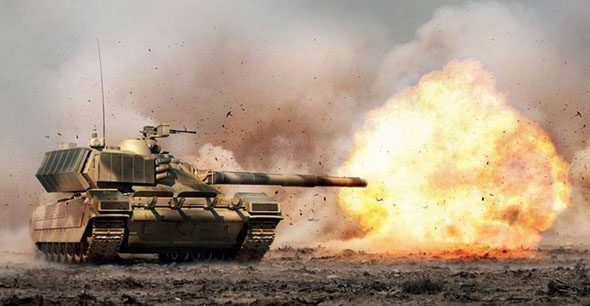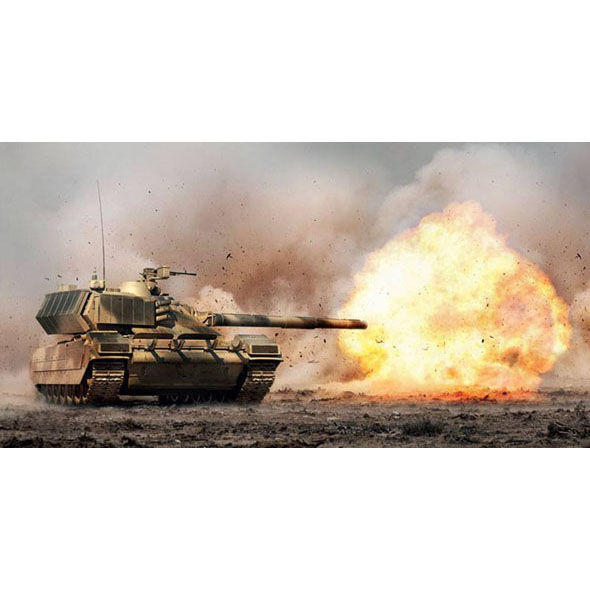
The Russian Army is planning to begin modernize its armored and mechanized forces beginning in 2015, fielding a new family of vehicles comprising a new main battle tank, armored infantry fighting vehicles, and various support platforms. The new tank was expected to be unveiled exclusively to Russian leadership at the Arms Expo exhibition at Nizhny Tagil in September, 2013. Along with a new tracked vehicle and new family of wheeled vehicles. Eventually, the new tank was unveiled quietly to Top VIP, inside the ‘presentation pavilion’ reserved for the Terminator-2 BMPT72. This pavilion was oversized for that type of vehicle, and was opened to the press only on the first day of the event. The new tank was hidden from the public eye and is likely to remain secret util it’s planned fielding in 2015
The MBT will be based on the new Armata, the prototype is scheduled to enter field trials in 2013, about 10 months ahead of schedule. First Deputy Defense Minister Alexander Sukhorukov said. The new tank is under development at Uralvagonzavod in Omsk. The first deliveries of the tank to the Russian Armed Forces are scheduled for 2015. A total of 2,300 MBTs are expected to be supplied by 2020.
It should be remembered that the Russians are building their fighting forces not only against NATO, but more importantly, to protect their long southern borders with radical Islamic countries that may be gathering military power, and the growing dominance of China in the east. Armored and mechanized forces are key to maintaining military superiority or parity against such threats. The level of sophistication in meeting such threats is not as demanding as meeting the advanced technology fielded by US and NATO forces.
The full version of this article is available
as part of our Premium Content.
According to preliminary reports, the new tank designated T-99 will be less radical and ambitious than the failed ‘Object 195’ or T-95, it will weigh less, therefore, become more agile and will be more affordable, compared to its more ambitious predecessors.
The Russian industry is also developing the Boomerang family of 8×8 wheeled armored vehicles which will gradually replace the current BTR-90. Additionally, the Kurganets-25 tracked armored vehicle provides high degree of commonality with the new Armata tank. The Kurganets-25 will evolve into various models, gradually replacing BMP and BMD and MT-LB and other types of tracked armored platforms.





















